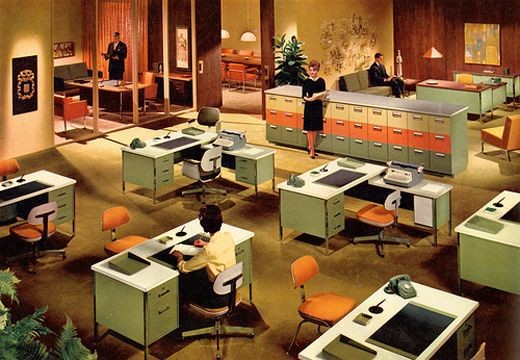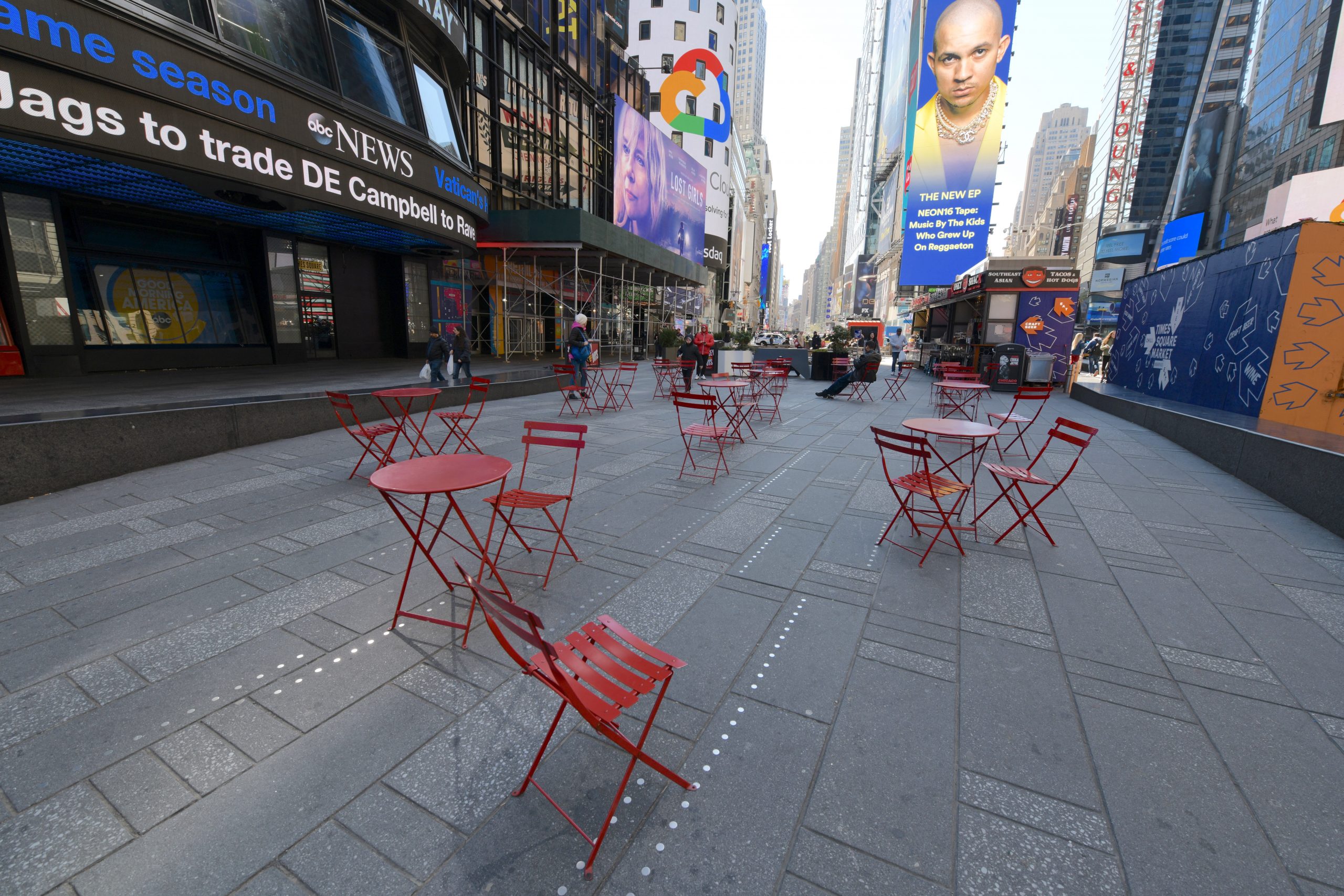DISCLAIMER: This article represents my personal views and not those of my employer or any affiliated organizations.
If few like the traditional office environment, why would we go back to it?
What even is an office? You go to an office every day. Where are the roots of office culture?
At its most basic parts: “An office is that part of business enterprise which is devoted to the direction and co-ordination of its various activities.” No part of that definition which mentions it needs to be conducted in a physical space.
What’s the future of the office?

Office Culture Through the Ages
The word office stems from the Latin word “officium“. Interestingly, an officium was not a place, but rather an often mobile ‘bureau’, in the sense of a human staff.
Offices began in classical antiquity as part of a large palace or temple. The “chancery” rose in the Middle Ages as a place where most governmental letters and laws were written. In the 18th century, large conglomerate companies first came about, requiring many offices for clerks. Flat-top desks actually began around this time, as a way for managers to easily see activities of employees. By the 1950’s, it became clear that privacy had to come along with discretion, and we got the cubicle.
Workplace culture in the 1950’s was much more hierarchical, and soon cubicles started to be denigrated by workers as “little boxes”, while upper management received the corner offices. That brought us to the “open office” layout, now the de facto standard for major companies around the world.

And yet, “the office” has both positive and negative connotations.
For many people, the office is a separate environment from home, where they can relieve themselves from the pressures of home life and focus on work. Many modern companies also have a fully stocked kitchen with snacks and drinks on-the-house. Some even regularly get catering at no charge to the employee.
You have to live in close proximity to the metropolitan area your office is in. You lose maybe 2, even 3 hours of commuting time on the way to and from work. You have to attend events and office gatherings as well, which you’re not formally compensated for. In doing this, you lose time to see your significant other or kids.

COVID-19 heralds a new era. It represents all kinds of other risks and precautions to be taken. As workers return to offices in 2021, you may see temperature checks, one-way walking paths, assigned seating during meetings, and plexiglass shields everywhere. Simply riding the elevator presents a whole other kind of conundrum.
Offices just don’t make sense anymore.

What Does the Future of the Office Look Like?
Shows like the Jetsons imagined a future where George Jetson went to work in a flying car that fit into a suitcase, to an office where a boss remotely checked in on him via telescreens. While we may not be driving flying cars, they were not too far off with remote working. Unlike the TV show, there’s no reason to micromanage someone OR force them to come into an office. Post-pandemic, it seems common sense that eliminating large office spaces and not forcing commutes creates huge savings in both overhead costs and productivity.

Okay. So What are Some Solutions?
- The Home is the New Office: Here’s an obvious one. Many companies are subsidizing office equipment for employees’ homes. Of course, there are certain things or equipment that couldn’t be included there.
- Co-Working Space: Companies could keep a shared space for those who wanted to come in. This space could house equipment or services employees couldn’t use at home. Spaces like Convene can be rented out on short notice. There are also reports that furnished apartments are growing in use by remote workers visiting cities.
- “Hot Desks”: An expansion on the co-working space idea, hot desking allows employees to use the same space at different times of the day. This could be an even bigger cost savings for smaller companies, in cities where real estate costs are high. Read more on how cities are changing here.
- “3-2-2” Work Weeks: Following the themes above, many have advocated for 3 days in the office, 2 days working remote, and 2 days off. In-office staff’s calendars could be staggered to meet office capacity limitations.
- Quarterly Conferences (Virtual or In-Person): With “Zoom fatigue” setting in, in-person interactions are still valuable. Every quarter, companies could hold in-person conferences where staff drive in, or fly in, to convene one-on-one about the events of the next quarter. In early stages, the seats could be spaced out and the majority of the time would be spent in breakout rooms. I just attended my first virtual conference, which included group activities, breakout sessions, and more.
Regional Segmentation Will Matter Less
When a workforce is spread across the globe, it is important to break it into manageable regions. That is here to stay. However, remote working opens up bandwidth. Workers in North America will share time zones with their South American counterparts. European times are adjacent to African/Middle Eastern times. And Asian times largely overlap with India and Australia. For example: If someone from your New York office takes an extended trip to Bogota, Colombia, they will be on a relatively unchanged time schedule. In a recent article, I laid out the common sense reasons and cost savings to move to the Midwest.
Flexible Hiring & Time Off
Flexible vacation is a growing benefit of many companies. While it’s not truly “unlimited”, as long as you have your manager’s approval, you can take the time off. There’s stats upon stats about how working mothers should not have to end their career because of a pregnancy, but have the best of both worlds: driving their career and parenting from home.
An uptick in temporary maternity and paternity leave policies has also meant a continually shifting workforce. This opens up space to bring on freelancers, or allow colleagues to try new disciplines while those workers are away. It could also open up regional opportunities for, say, someone in Santiago, Chile or Buenos Aires, Argentina to work with a team in New York. There would also be less limitations on hiring outside the major world commerce hubs, for example, in oft-overlooked regions like “Middle America”, “The North of England”, or in Pacific island countries for Asia-Pacific.
Not Everyone Will Want to Work Remotely
There are certain people who will want to come into an office – Parents who need a separate working environment, as well as those who have a small dwelling and need extra space to work, free of distractions. Some people find working remotely to be isolating or disorienting. At the same time, companies are seeing the need to deliver increased autonomy and trust to workers to fit their lifestyle.

Conclusion
Sprawling cubicles of yesteryear are left to “Dilbert” and the dustbin of history. The overhead costs of keeping an office open, and the pain of a commute and daycare for working parents makes ditching the office an obvious choice. In the 21st century, professionals are remote-ready and in-person interactions should be on their time.
The workplace evolved over centuries of history, why should it stop now?
Sign up to the Origin Story mailing list or more helpful professional tips!






